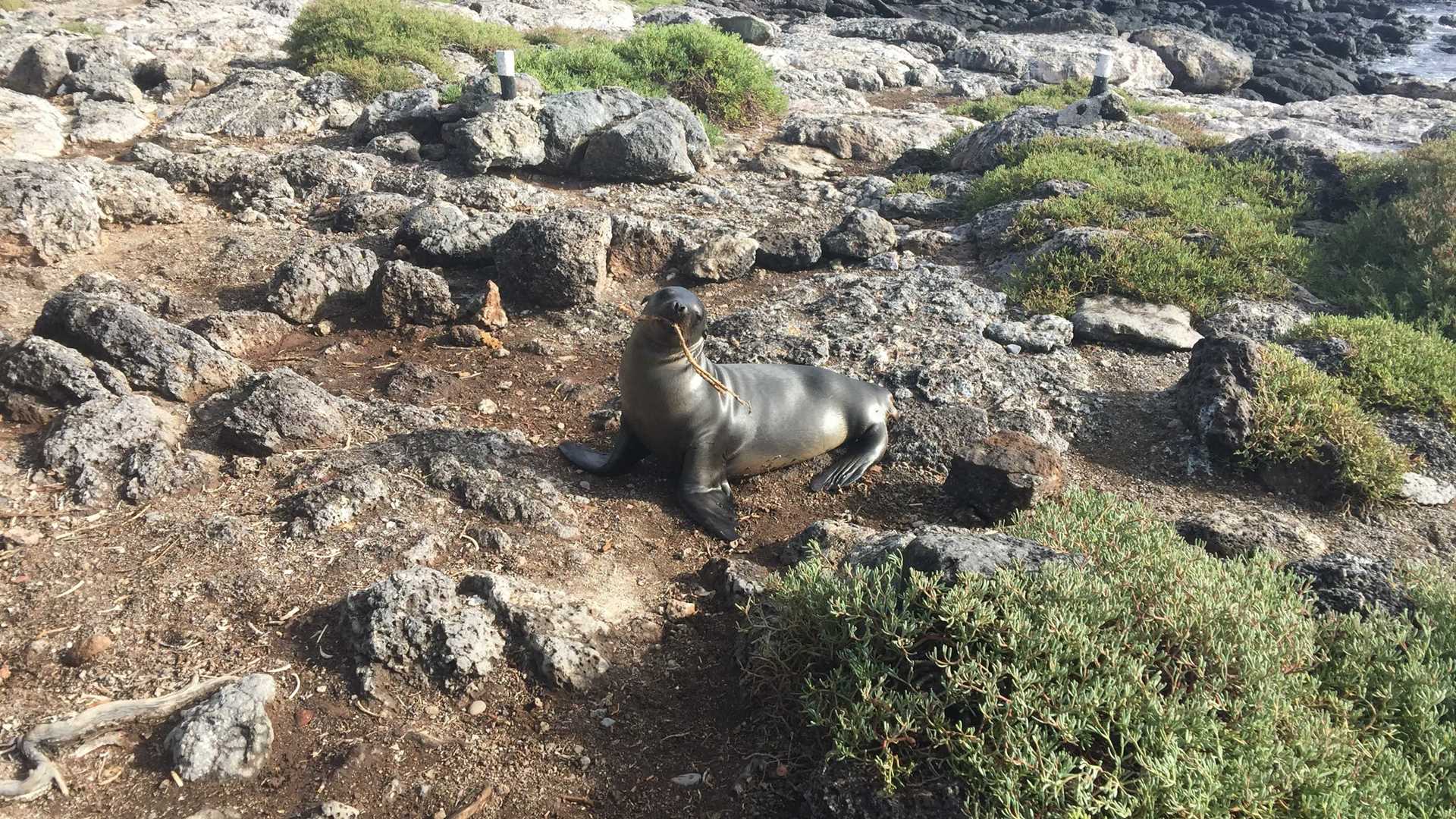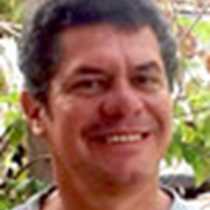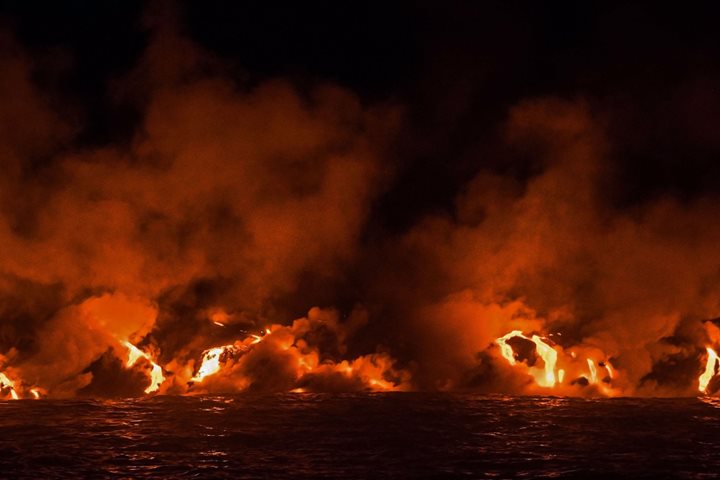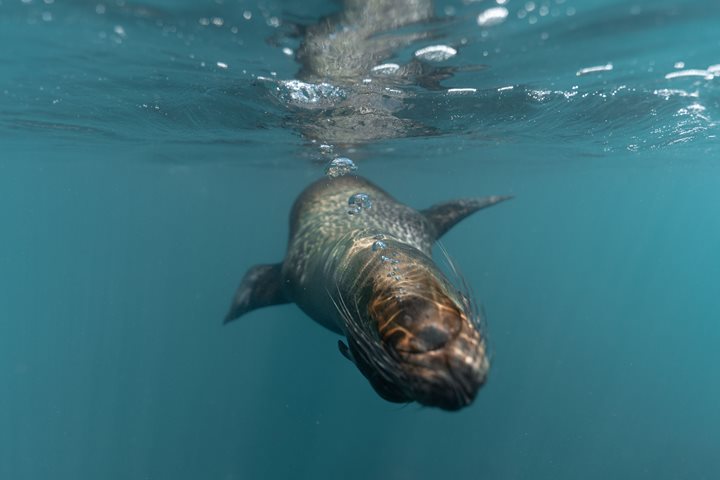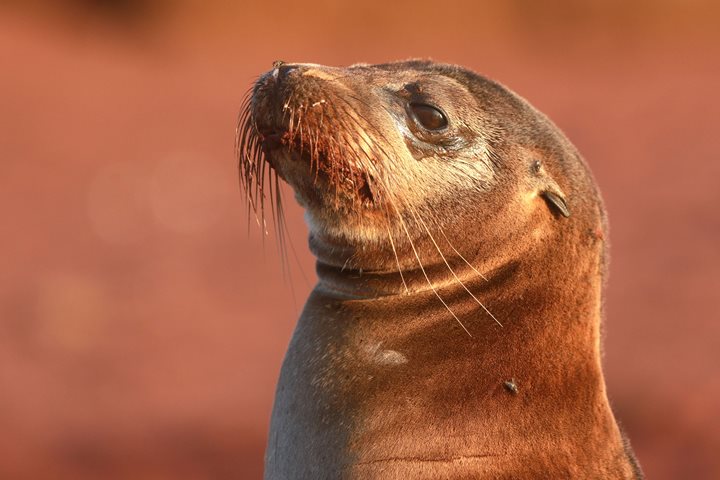We visited South Plaza Island after a dry landing and set out to walk through an opuntia cactus forest. Yellow land iguanas guarded the base of every tree as it is their only source of nourishment during the dry season. Here, we spotted hybrids of male marine iguanas with female land iguanas. Wildlife was found in all directions: We walked along a cliff toward a Galapagos sea lion bachelor colony and observed swallow-tailed gulls, blue-footed boobies, frigate birds and red-billed tropicbirds. After breakfast we swam in the canal between Santa Cruz and North Plaza Islands. For our final activity we had a wet landing in Santa Fe, which lies southeast of South Plaza. We enjoyed a kayaking excursion and saw the endemic yellow Santa Fe land iguana. It was a fun-filled day and we look forward to more wildlife tomorrow.
- Daily Expedition Reports
- 18 Jul 2019
South Plaza and Santa Fe Islands, 7/18/2019, National Geographic Islander
- Aboard the National Geographic Islander
- Galápagos
Fabian Bucheli, Naturalist
Fabian Bucheli studied at the German School in Quito, graduated from the University of California with a bachelor of science in administration, and earned a master’s degree in international management from Thunderbird School of Global Management in A...
Read MoreShare Report
Related Reports
11/23/2022
Read
National Geographic Islander II
Isabela and Fernandina
Our day began with the chance to point out a lot of interesting geological features as we enjoyed Zodiac tours along a massive flank of Ecuador Volcano on Punta Vicente Roca. In the afternoon, we took a sunny walk on Punta Espinoza on Fernandina Island. We spotted many iguanas, and a bunch of sea lions hanging around, too.
11/22/2022
Read
National Geographic Islander II
North Seymour & Rabida Islands
Relatively small and low compared to neighboring Santa Cruz, North Seymour is located to the north of Baltra. The island is dry with predominantly low shrubs, like prickly pear cacti. The incense trees are bare during the dry season. Seabirds like frigatebirds and blue-footed boobies nest on the island, and sea lions rest on the sand when they are not fishing. Land and marine iguanas also live here. Rabida is in the middle of the archipelago and has a striking red sand beach. We observed a small colony of sea lions of all ages resting or nursing. Behind the beach, American flamingos nest in a brackish lagoon. This island is full of contrasts and wildlife that we enjoyed observing during this day of expedition.

